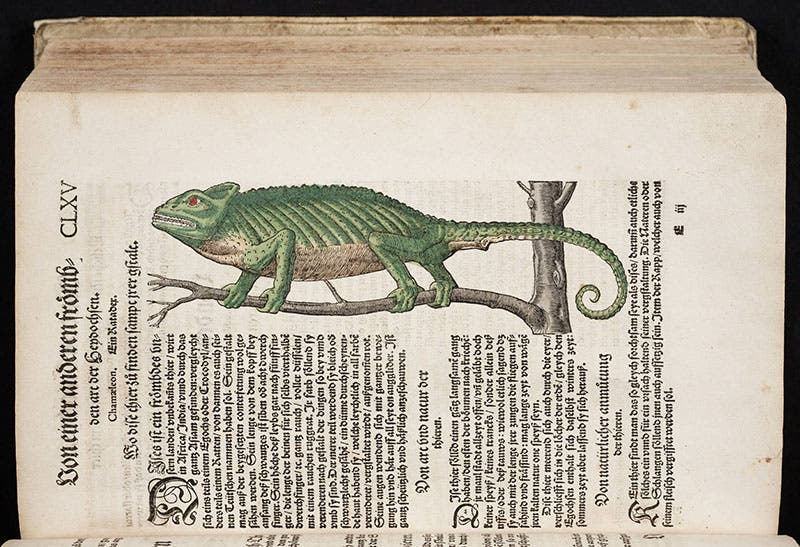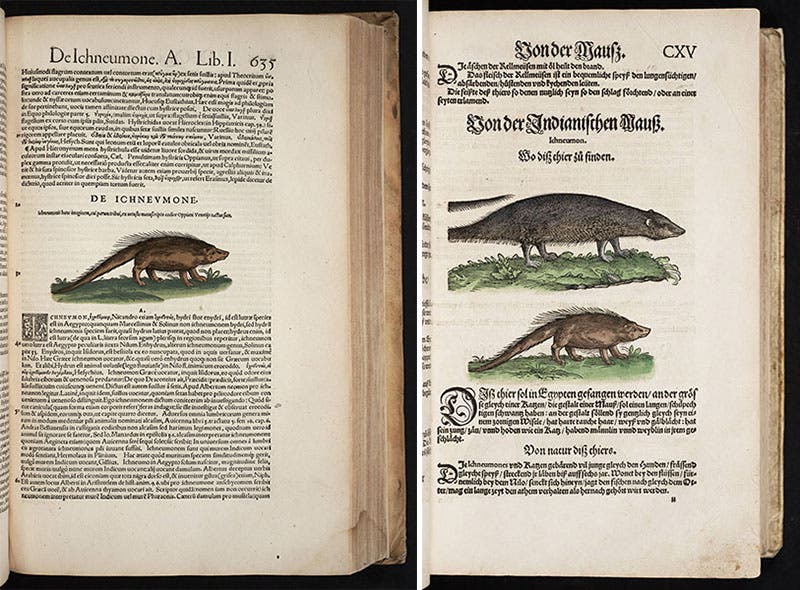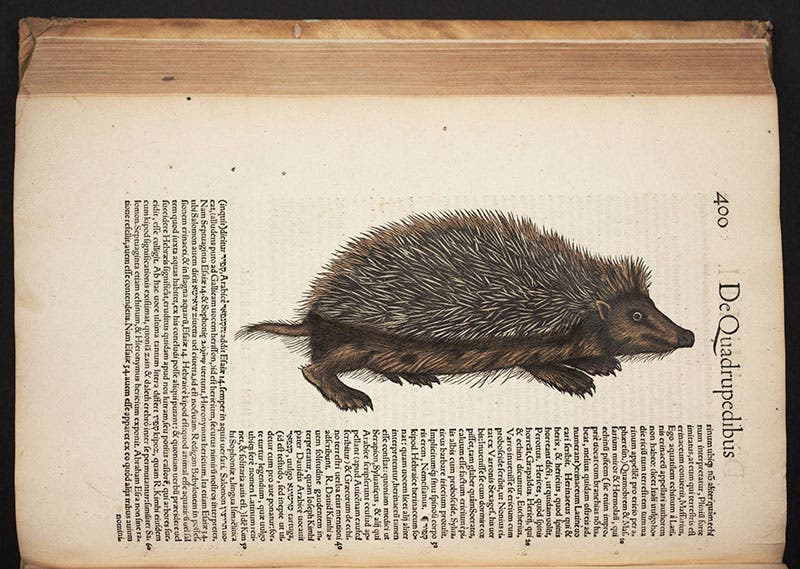Scientist of the Day - Conrad Gessner
Conrad Gessner, a Swiss naturalist, was born Mar. 26, 1516. Gessner was the author of the first modern work of natural history, Historia animalium, published in four large folios from 1551 to 1558. The text of this work is mostly traditional, relying on ancient authorities such as Aristotle and Pliny. But there are two novelties. One lies in the addition of animal emblems, adages, hieroglyphics, and coins to the classical texts, producing a form of scholarship that has been called emblematic natural history, the intent being to show all the ways that animals have been incorporated into human culture. The more visible novelty lies in the illustrations. Gessner was basically an armchair naturalist, but he was a good scholar, and had a wide web of correspondents, and he unearthed or solicited the best images he could find for his text. Some are better than others, but all a great improvement over illustrations in earlier naturalist works. We are fortunate at our Library in having not only a hand-colored copy of the first volume of the Historia animalium (1551), the volume on live-bearing quadrupeds, but a hand-colored copy of the German translation and abridgement that was published in 1563, with the same woodcuts, under the title Thierbuch. The images we show here are a mix from these two editions. The first image we chose for today is the armadillo, from the 1563 Thierbuch. Note how beautiful the coloring is, and how vibrant it remains, 456 years later.
Our second image shows the fox, from the 1551 Latin edition. We turned it sideways, so you can better appreciate his sly foxy countenance.
Our third image is a handsome (and fierce) green chameleon. This woodcut was not in the 1551 edition because it had not been drawn yet. Pierre Belon first included it in his De aquatilibus (1553), and Gessner pulled it from there for the Thierbuch.
Next we have two images, side by side, to show how Gessner improved his illustrations, when it was possible to do that. The left image, from the 1551 edition, shows an Egyptian ichneumon – charming, but not exactly drawn from life. Belon did draw one from life for his 1553 book, and Gessner then included both images, old and new, in the Thierbuch. We also wanted to show what a difference coloring can make. The first image below is the rhinoceros from the 1551 Latin volume, copied from Albrecht Dürer’s famous 1515 woodcut. Right below it we see the identical woodcut, as printed in the 1563 Thierbuch, but now colored quite differently.
Our final image is special to us at the Library, the hedgehog from the 1551 Historia animalium. Many, many years ago, we were asked by the Director to come up with an image that could be used for the Library’s very first postcard. We chose Gesner’s hedgehog, whom we had named Herbie.
Herbie was a big hit and soon became the Library’s unofficial mascot. When the Library later decided to publish a quarterly magazine, it was named The Hedgehog, and Herbie graced the original masthead, although now he shares it with his many hedgehog cousins from some of our other works of natural history. We featured Gessner’s 1551 volume in our 2009 exhibition, The Grandeur of Life. At the time, the accepted spelling for his name was Konrad Gesner, as it had always been. The Library of Congress was persuaded to change this a few years ago, in a move that was, in our opinion, not very well thought out. A spelling that has been accepted and used for more than 450 years should not be lightly cast aside, as it just makes life difficult for scholars and librarians alike. Dr. William B. Ashworth, Jr., Consultant for the History of Science, Linda Hall Library and Associate Professor, Department of History, University of Missouri-Kansas City. Comments or corrections are welcome; please direct to ashworthw@umkc.edu.












